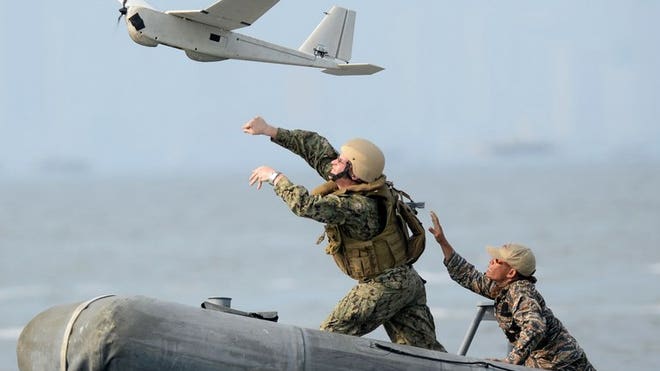Philippines says US spy planes monitoring China at sea
By Jason Gutierrez
MANILA (AFP) – The Philippines said Wednesday that US spy planes were providing crucial intelligence on Chinese military activities in disputed areas of the South China Sea.
US Navy P-3 Orion surveillance aircraft frequently fly over areas that the Philippines says are within its legal territory but where China has deployed military vessels, said Foreign Secretary Albert del Rosario.
"I think it's of significant importance for us," del Rosario told reporters, when asked about the value of the information gathered by the spy planes.
"We do have an interest in terms of what is going on with our exclusive economic zone, within our continental shelf, and we want to know if there are any intrusions."
China claims nearly all of the sea, even waters close to the Philippines and other neighbours.
Analysts have long warned that China's overlapping claims with the Philippines, Vietnam, Malaysia, Brunei and Taiwan could be a flashpoint of armed conflict.
Tensions have risen in recent years as China has adopted more aggressive diplomatic and military tactics to assert its claims to the potentially resource-rich waters.
The Philippines has repeatedly called on the United States, its former colonial master and close military ally, for help in resisting China.
While the United States insists it will not take sides in the South China Sea dispute, it has helped to upgrade the Philippines' military capabilities.
When asked if the spy plane surveillance on China may jar with the United States' insistence of neutrality in the maritime dispute, del Rosario emphasised the close US-Philippine ties.
He pointed out the allies had a mutual defence treaty, which calls on each party to help the other in times of external aggression.
He also said the United States was keen to maintain peace in the Asia-Pacific and ensure freedom of navigation in the South China Sea, home to some of the world's busiest shipping lanes.
"I think it is in that context that we believe they have a right to be there," he said.
"It is also because we'd like them to be there, that is the bottom line."
When asked how long the spy planes had been flying over the Philippine-claimed waters of the South China Sea, del Rosario said since at least he became foreign secretary in 2010.
He gave no further details on the timeframe but said the spy planes operated mostly, but not exclusively, during times of joint military exercises between the Philippines and the United States.
The Philippine military, which is considered among the weakest in the region, has largely relied on excess US hardware to boost its capabilities.
In 2011, it acquired a decommissioned US coastguard cutter, and transformed it into its naval flagship called Gregorio del Pilar.
A sister ship, the Ramon Alcaraz is set to arrive within days, and President Benigno Aquino is scheduled to attend a welcoming ceremony for it next week at a former US naval base about three hours' drive north of Manila.
Del Rosario said the government was looking at acquiring more US ships in the future, as well as allowing more rotational visits of American soldiers.
"I think it would be good if we can get one or two more," he said of the US vessels.
The Philippines was also expected to get $50 million this year from a US congressional budget allocation for foreign military aid, 60 percent more than last year.
China has consistently said the United States should have no role to play in the dispute over the South China Sea.
Read more: http://www.foxnews.com/world/2013/07/31/philippines-says-us-spy-planes-monitoring-china-at-sea/#ixzz2aek8sceq

No comments:
Post a Comment